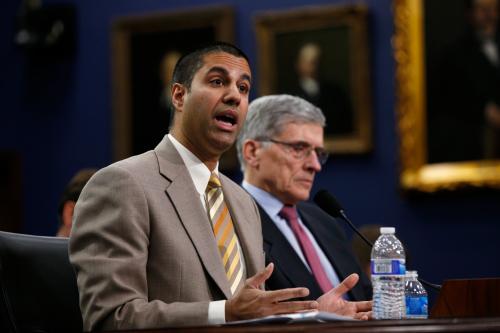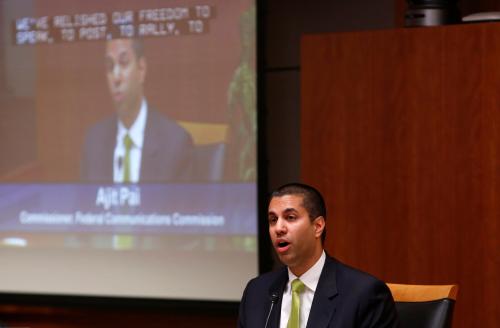The public interest standard has governed broadcast radio and television since Congress passed the Radio Act of 1927. However, decades of successive court cases and updated telecommunications laws have done little to clarify what falls into the public interest. The Radio Act gave local broadcasters monopolies over specific channels of electromagnetic spectrum to reduce interference on public airwaves. In exchange for control over a limited resource, the text of the law instructs broadcasters to operate in the “public interest, convenience, and necessity”. A recently released paper by Center for Technology Innovation Nonresident Senior Fellow Stuart N. Brotman outlines the legislative, judicial, and regulatory history of this public interest standard and offers some recommendations for how it might be reformed.
Free speech, limited spectrum
Prior to the public interest standard, free speech advocates argued with the broadcasting industry over who should have editorial control over content. Industry groups opposed a common carrier approach that would have allowed anyone to buy airtime. The resulting compromise established a short-term renewable licensing regime, overseen by the Federal Communications Commission since 1934, which required broadcasters to act on behalf of all others who did not receive a license. Congress granted the FCC the flexibility to revise its interpretation of the public interest standard to reflect changing circumstances. Since its founding, the FCC has repeatedly refused to set forth its own concrete definition of the public interest.
Decades of legal challenges to the application of the public interest standard have upheld it without providing any further definition. In the 1930s, a series of courts ruled that denying a license renewal to a broadcaster on public interest grounds did not constitute censorship. The 1940s saw the U.S. Supreme Court repeatedly affirm the FCC’s power to interpret the public interest standard. A 1956 federal appellate court decision stated that the public interest does not lend itself to a “precise or comprehensive definition”, but stated that the FCC should not apply the standard arbitrarily or capriciously. The courts have repeatedly deferred to FCC and the authority delegated to them by Congress in the Communications Act of 1934, as amended.
Agency action
The FCC itself has viewed the public interest as the sum of the factors that it must consider in its decisionmaking. The agency renews broadcast licenses with few exceptions, and requires broadcasters to submit little information on how they are fulfilling their public interest requirements. Critics complain that the FCC has relied on market forces rather than the public interest standard when awarding initial or renewed broadcast licenses. The agency has responded with its view that market forces are compatible with the public interest by offering the “maximum service to the public at the lowest cost and with the least amount of regulation and paperwork.”
The Telecommunications Act of 1996 updated the 1934 Communications Act, but did not address the public interest standard beyond maintaining the status quo. Moving forward, Brotman asserts that Congress is in the best position to legislate a clearer meaning for the public interest standard. Until that happens, the FCC should publish a clear set of guidelines for how it applies the standard. Only then will broadcasters, lawmakers, and regulators definitively know how scarce spectrum should be used for the benefit of everyone.







Commentary
90 years later, the broadcast public interest standard remains ill-defined
March 23, 2017